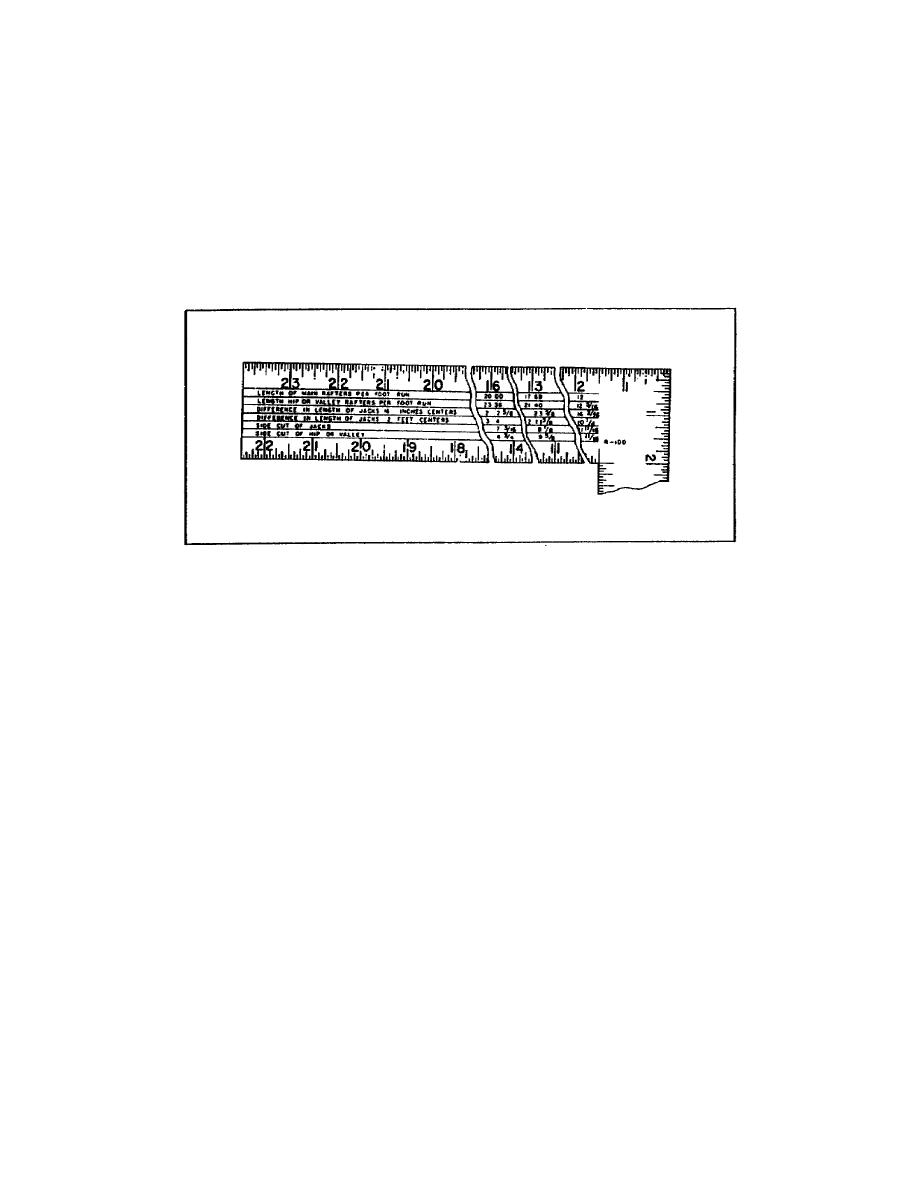
tables on the blade. One type gives both the line length of any pitch of rafter per foot of run and the
line length of any hip or valley rafter per foot of run. The difference in the length of the jack rafter,
spaced 16 or 24 inches (on center), is also shown in the table. Where the jack, hip, or valley rafter
needs side cuts, the cut is given in the table. The other type of rafter table gives the actual length of a
rafter for a given pitch and span.
a. Line length. The rafter table (see Figure 3-29) is used to determine the length of the
common, valley, hip, and jack rafters, and the angles at which they must be cut to fit at the ridge and
plate. To use the table, the carpenter must know what each figure represents.
Figure 3-29. Line lengths on the rafter table
(1) The row of figures in the first line represents the length of common rafters per foot of
run (look at the left end of Figure 3-29), as the title at the left-hand end of the blade indicates.
(2) Each set of figures under each inch division mark represents the length of a rafter per
foot of run, with a rise corresponding to the number of inches over the number. For example, under
the 16-inch mark appears the number 20.00 inches. This number equals the length of a rafter with a
run of 12 inches and a rise of 16 inches. Under the 13-inch mark appears the number 17.69 inches,
which is the rafter length for a 12-inch run and a 13-inch rise.
NOTE: The other five lines of figures in the table are seldom used in the theater of operations.
b. Actual Length. At the left end of the table (see Figure 3-30) are figures representing the run,
rise, and the pitch of a roof
(1) The figures show that a rafter with a run of 12 and a rise of 4 has 1/6 pitch. A 12 run,
6-inch rise has 1/4 pitch. A 12 run, 8-inch rise has 1/3 pitch.
EN5156
3-22



 Previous Page
Previous Page
